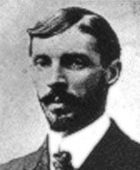Rationale for Inclusion
-
- Pioneering Aviator: Henry Farman was one of the earliest aviation pioneers, playing a crucial role in the development of flight during the formative years of aviation. A French aviator of British descent, Farman was among the first to break new ground in piloting and aircraft design.
- Record-Breaking Early Flights: Farman made history in 1908 by setting multiple world records for distance, endurance, and speed with his Voisin-Farman I biplane. One of his most famous achievements was making the first circular flight of 1 kilometer at the Grand Prix d’Aviation in January 1908, winning the prestigious Deutsch-Archdeacon prize. This event demonstrated the viability of sustained, controlled flight, further advancing the public’s interest in aviation.
- Contributions to Aircraft Design: As a pilot and designer, Farman was directly involved in improving the capabilities of early aircraft. Dissatisfied with the designs of others, he began designing his own aircraft, which led to the creation of the Farman III, one of the most successful early biplanes. The Farman III featured important improvements in stability and control, and it became widely used for both training and competitive flying, helping to popularize aviation worldwide.
- Commercialization of Aviation: Farman was instrumental in transforming aviation from a sport and experimental field into a more organized and practical industry. In 1912, alongside his brother Maurice, he co-founded the Farman Aviation Works, one of the earliest and most successful aircraft manufacturing companies. The Farman brothers’ designs were used extensively for both military and civilian purposes, making their company one of the most influential aviation manufacturers during the early 20th century.
- Development of the First Passenger Airliner: Farman’s company was responsible for developing one of the first aircraft specifically designed for passenger transport. The Farman F.60 Goliath, introduced in 1919, was initially developed as a bomber during World War I but was later converted into one of the world’s first commercial airliners. The Goliath helped pioneer the concept of civil aviation, carrying passengers between Paris and London, thus demonstrating the commercial potential of air travel.
- Aviation Legacy: Henry Farman’s contributions to aviation left a lasting legacy. The Farman Aviation Works continued to produce aircraft for decades, contributing to the advancement of both military and civilian aviation. His aircraft, particularly the Farman III and the Goliath, were iconic in the early years of flight and helped to establish aviation as a viable industry. Farman’s influence extended beyond his own designs, as his work inspired future generations of aviators and engineers.

Biography
- Early Life and Education: Henry Farman was born on May 26, 1874, in Paris, France, to English parents who had settled in France. Farman initially pursued a career in sports, becoming a successful bicycle racer before transitioning to automobile racing. His early success in both fields demonstrated his passion for speed and mechanical engineering, laying the groundwork for his later involvement in aviation.
- Personal Life: Henry Farman was known for his adventurous spirit and pioneering mindset. Coming from a well-off family, he had the financial means to pursue his passions, including sports and aviation. Farman’s strong connection to his family, particularly with his brother Maurice Farman, was a defining aspect of his personal life.
- Early Career: Farman’s first endeavors were cycling, where he won the French Championship in 1892 and auto-racing, where he had a strong run of success on the European racing circuit. In 1907, he purchased a Voisin biplane and began his career in aviation.
- In recognition of his service to aviation Farman received numerous awards and accolades, including:
- Induction into the International Air & Space Hall of Fame (1988)
- Made a Chevalier of the French Légion d’honneur (1919)
